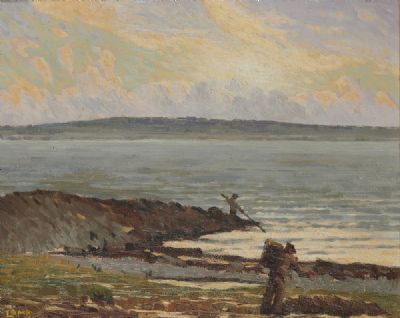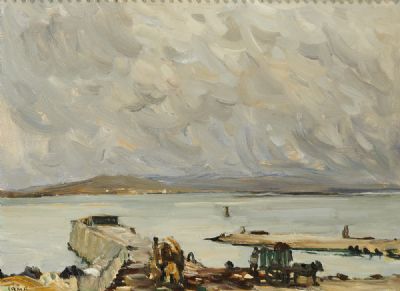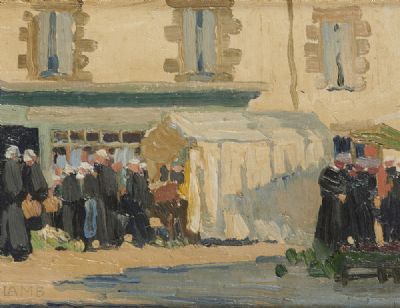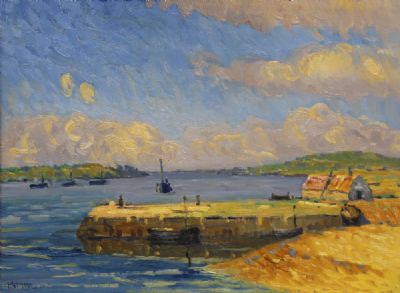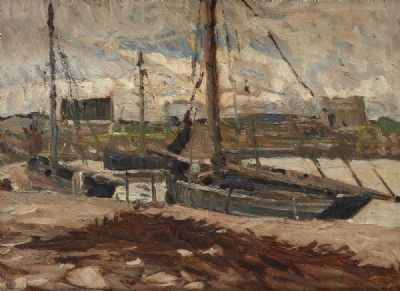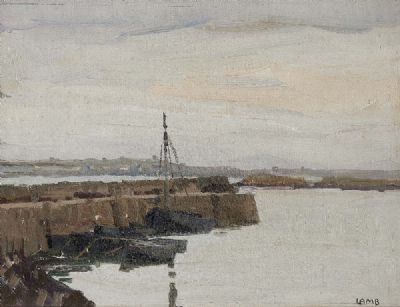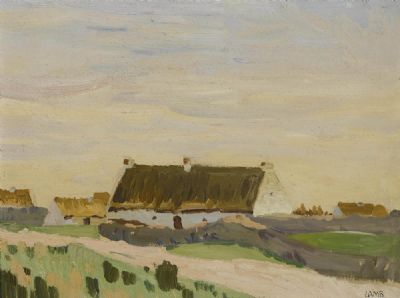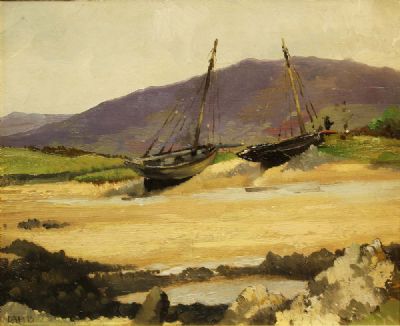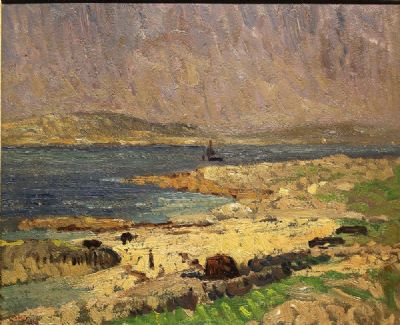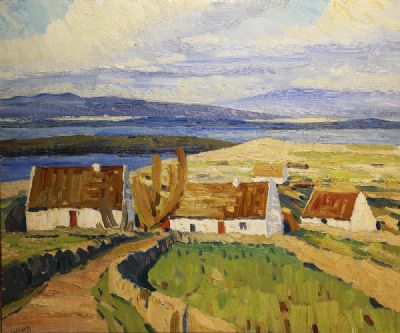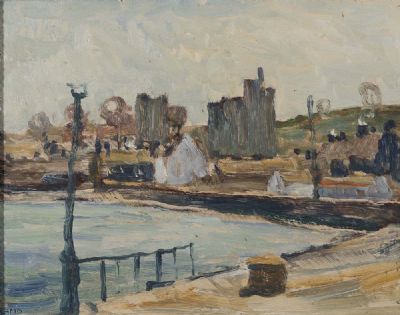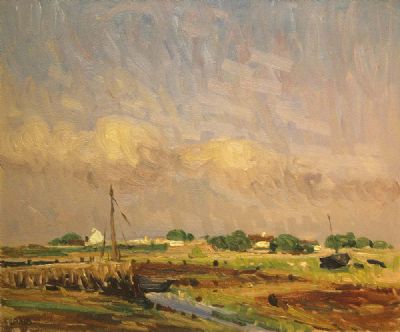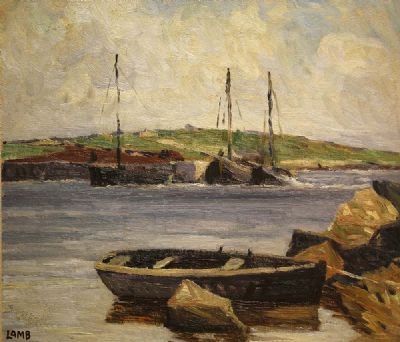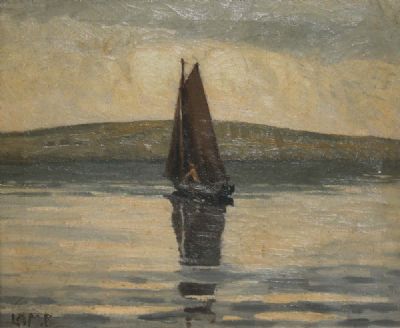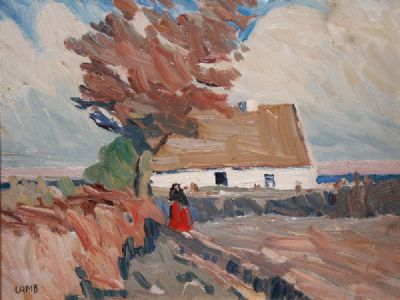Charles Vincent Lamb
Charles Lamb was born in Armagh as a son of a painter and decorator. He attended life-drawing evening classes at Belfast School of Art before attending the Metropolitan School of Art in Dublin in 1917 on a scholarship.
In 1921 Lamb settled in Carraroe, a gaeltacht area in Connemara, previously visited by Scottish painter David Wilkie in 1835, and held summer classes there. He also spent time in Brittany where he found an affinity to the locals way of life. Lamb’s consistent subject, however, was on the local people of the West of Ireland championing the traditions of the Aran islands and the people on the coast. He painted the locals with a heroism popular at the time, reflecting a specific national identity within the contemporaneous context of the Irish Free State. Lamb chronicled this way of life, which appeared under threat of modernity thanks to new developments, particularly in machinery and industry. In this way, he is considered alongside other Irish artists such as Sean Keating and Paul Henry, who shared this agenda. He is best known for his landscapes, painted in oil in warm tones. His brushwork is expressive but demonstrates control.
Among his achievements, Lamb was celebrated with a memorial exhibition at the Hugh Lane Municipal Gallery of Modern Art in Dublin. His work has been exhibited in Ireland, England and USA. He is a member of Royal Hibernian Academy and the Royal Ulster Academy. His work is in a number of important private and public collections.
Read More
In 1921 Lamb settled in Carraroe, a gaeltacht area in Connemara, previously visited by Scottish painter David Wilkie in 1835, and held summer classes there. He also spent time in Brittany where he found an affinity to the locals way of life. Lamb’s consistent subject, however, was on the local people of the West of Ireland championing the traditions of the Aran islands and the people on the coast. He painted the locals with a heroism popular at the time, reflecting a specific national identity within the contemporaneous context of the Irish Free State. Lamb chronicled this way of life, which appeared under threat of modernity thanks to new developments, particularly in machinery and industry. In this way, he is considered alongside other Irish artists such as Sean Keating and Paul Henry, who shared this agenda. He is best known for his landscapes, painted in oil in warm tones. His brushwork is expressive but demonstrates control.
Among his achievements, Lamb was celebrated with a memorial exhibition at the Hugh Lane Municipal Gallery of Modern Art in Dublin. His work has been exhibited in Ireland, England and USA. He is a member of Royal Hibernian Academy and the Royal Ulster Academy. His work is in a number of important private and public collections.
Read More

